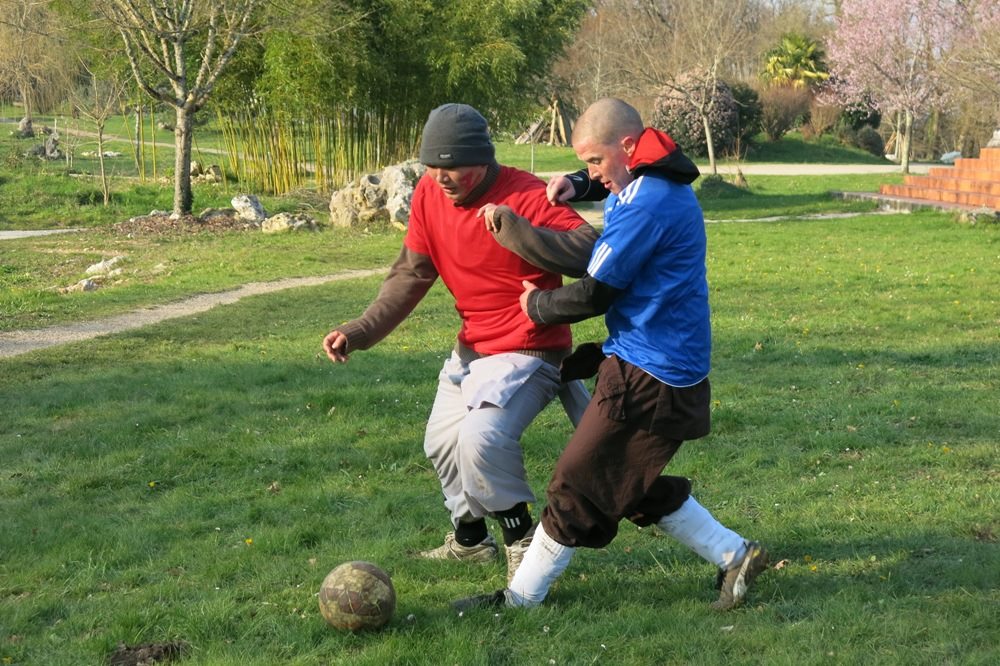
In this Part 2 of a 2-part monthly series, Karim from Wake Up London interviews Brother Dao Kien from Upper Hamlet, Plum Village, about practicing with a monastic Sangha, dealing with difficulties within the practice, his advice for those who are thinking of doing the 5-year monastic program, and what he enjoys the most about living in Upper Hamlet. Click here to read about how Brother Dao Kien got involved in the Wake Up movement and his aspiration to become a monastic.
Karim: Now that you’ve had seven months of practice as a monastic, how is it different from practicing as a lay friend?
Brother Dao Kien: When you come into a monastic Sangha, it takes a while to adjust to the Sangha. The monks and nuns have certain ways of doing things. I think there’s a part of me, like a little child, that desperately wants to feel safe. I suppose that part of me is looking for validation all the time when you come into a new environment. I want to know that this is a safe place, that I’m not judged, and everything is fine. But it takes time to feel comfortable and safe in a new place.
Personally, the practice has been to get in touch with that little child in me who desperately wants to feel loved and accepted without creating aversion or grasping to what is happening in the present moment. My mindfulness practice really helps to create space for me to see more clearly what is happening inside and outside of me in each moment with an attitude of acceptance.
The practice has been to get in touch with that little child in me who desperately wants to feel loved and accepted without creating aversion or grasping to what is happening in the present moment.
It’s funny that sometimes there’s a disconnect between the mind and heart. The mind says, “Wow, the conditions are perfect and the brothers are lovely. You have a lot of time on the schedule. You have a zendo and a library and everything’s perfectly set up for the mindfulness practice.” It seems, however, to take a little bit longer for my heart to catch up with my head, so that I can deeply feel that I’m very much at home here. This has been my experience over the year, but my practice gives me the confidence that I can handle whatever comes.
Each time I come through a difficult time, I seem to learn something new about myself. Thay sometimes talks about Manas within ourselves, i.e. a part of us that doesn’t see the benefits in experiencing difficulties and constantly seeks pleasure. I think these last couple of months have been about re-training my Manas and about seeing that it is the very concept of happiness (that I have built up over many years) that has stopped me from being truly happy in my life. It’s like I almost have to drop my concept of happiness before I can become happy 🙂 I can see now how important it is to experience difficulties, so you can learn and grow and be in touch with real happiness and not just some fleeting experience that I want to hold on to or grasp at.
Karim: In experiencing difficulties, is there a particular practice that you find useful in dealing with difficult situations?
Brother Dao Kien: During the aspirant period, I didn’t understand walking meditation at all when I first came because I didn’t see the enjoyment. I found the whole thing very boring, but slowly through the year, I had somehow fallen in love with it. I spent a lot of time in the meditation hall, doing slow walking meditation with my breath and my steps. Somehow when I do this now, it seems to open a space within quickly so that the energy of mindfulness can embrace whatever is happening in the current moment. Another thing is to just lie in bed or on the floor and just breathe. Sort of talk to that little wounded child in me in the current moment, rub my chest a little, breathe, and say, “It’s okay, I know you are hurting right now. I have not been here with you for so long, but I am here now and we can go through this together.”
I think touch and tone of voice are important for me when I want to offer myself love and compassion – sort of like a loving mother would be with a child. The most important thing for me though is to feel, experience, and embrace what’s present within me with the energy of mindfulness. I have noticed that my mind always has a tendency to paint over difficult emotions with aversion to what is actually happening and grasp at some other experience. I see that it is kind of like shooting myself with a second arrow. Once I remove that arrow, I can be more open to what is happening right there and then. This is where a strong practice is so important, i.e. to be able to recognise and embrace difficult emotions.
The most important thing for me though is to feel, experience, and embrace what’s present within me with the energy of mindfulness.
I also find that removing the object quickly helps me. When I say object, I mean I have noticed that my suffering always has a tendency to want to look for an object outside of myself to blame. This usually involves creating a story in my mind about how I am the victim. Somehow, my mind loves to be a victim, which leads to me creating a story about how I was wronged. This then waters unwholesome seeds within myself such as resentment, anger etc. For me, it’s about breathing, trying to come home to myself, and seeing that the cause and solution are within me.
It’s like seeing that everything that happens outside of myself is sort of irrelevant. Every difficulty I have is because of something within me, and everything I need to heal and transform myself is also within me. You have to become sort of like an investigator as a mindfulness practitioner, i.e. to investigate what is happening in each moment, why it is happening, and so life can become incredibly interesting.
And it is not always something obvious like anger or resentment, which are quite easy to see the negative effect on the body and mind. I like the saying, “Anger is like swallowing poison and expecting the other person to die” because it hurts the person that is holding the grudge much more than the perceived aggressor. Something that I have found is much more subtle is the effect of sensual desire on the mind, i.e. being attracted to someone. It is like a sweet knot because it can be very enjoyable to ruminate on why that other person is so perfect.
Through sustained observation though, I start to see that frequently dwelling on a particular subject produces a kind of mental inclination, which leads to being caught up in even more of the same type of thoughts. With sensual desire, I start to see that it’s arising not only due to the person, but also due to an inclination towards sensuality that is kind of like embedded within my own mind. This inclination within my own mind influences the way I perceive external objects, so there is this constant dance between my mind and what is happening outside of me. I suppose as a monastic, I can have the tendency to feel guilty about these feelings, but for me it is about looking at how guilt feels when it is present in the mind in the current moment. From my limited experience before becoming a monk, I can see that every time I satisfied a sensual desire (which did not come from a place of love), the act of gratification lead to even stronger manifestations of the same desire. I like the Buddha’s statement “the way to inner peace and composure necessary depends on gaining independence from the vortex of desire and gratification.”
Karim: It sounds like you’ve learned a lot from this experience. Is there anything you would to say to people who are thinking about doing the 5-year program?
Brother Dao Kien: Just go for it. Doubt will always be there. There are five hindrances in the mindfulness practice: desire, ill-will and aversion, sloth and torpor, restlessness and worry, and doubt. The Buddha described these mind states as obstacles that block the proper functioning of the mind. I had doubt all the time during the first couple of months of the aspirant period! I’d go to the shower every morning and think, “What am I doing here in Plum Village? This is totally ridiculous. I’m about to put on a robe.” Slowly, when my mindfulness energy got stronger, I was much more able to see hindrances as they arose in my mind.
In hindsight, I think a large part of my practice this year has been to familiarise myself and befriend the five hindrances. I feel that my mindfulness practice helps me to quickly see the occurrence of a hindrance in my mind in the current moment without immediately reacting to it or wanting to push it away. I am a long way from being a legend in the practice, but I feel that transformative meditation takes place in precisely those moments when the presence of a hindrance is honestly recognised and made an object of my awareness.
Before I came to Plum Village, I had a tendency to think I would be sitting on a mountain top in a state of blissful serenity all the time, but the reality is a little different.
Before I came, I had a tendency to think I would be sitting on a mountain top in a state of blissful serenity all the time, but the reality is a little different 🙂 I think the first step is to embrace the fact that the mind is currently in a state other than what I would like it to be. Such patience and acceptance (which does not come easily to me) in this way can lead to a fuller understanding of how a hindrance affects me, and how it has effecting me throughout my life. As my basic mindfulness practice grows, it ultimately gives me an opportunity to gain a fuller picture of each situation in life and to develop a feel for how it affects me in both my body and mind. Gaining a fuller picture helps me to understand how a hindrance arose in the first place, how to come out of it, and to stop it quickly when it happens again.
I think the key is just simple recognition and with time, it will become easier to dispel a hindrance as soon as it is recognised. Learning to withstand the impact of a hindrance with awareness is therefore an important skill for me as I proceed on the path. In one way, just by recognising the presence of a hindrance, it’s like turning obstacles of meditation into meditation objects. The most important thing though is to develop a strong mindfulness practice because without a strong mindfulness practice, I have no hope of recognising a hindrance in my mind when it arises. It is also important to be aware of when one is not experiencing a hindrance, especially like doubt, which plagued me for months at the start. This can bring a lot of joy, and such joy is really important for my practice.
Sorry, I got a bit distracted there, but it has been interesting to look at doubt in the face over the past couple of months and see how it affected me in the past in relationships and career choices. I feel that you can’t go wrong by coming to Plum Village because you can come for a few months, spend a couple of months with the Sangha, and you can go home if you feel like it’s not for you. If you do decide to stay, you spend one year in aspirancy. That’s the middle ground between lay life and monastic life, so you can see then if it is for you. There are many times when you can go home. If it’s not for you, then it’s not being seen badly by the community at all. But it gives you time to experience and get to know yourself better. Any amount of time spent in Plum Village, whether it’d be a week, a month, six months, or one year, it’s all positive even if you’re suffering when you come. A mantra I like to say over and over to myself here is “Even when it’s bad, it’s good” because you are constantly learning.
Any amount of time spent in Plum Village, whether it’d be a week, a month, six months, or one year, it’s all positive even if you’re suffering when you come.
In saying that, I think sometimes when you come to Plum Village, it’s absolutely heaven and then it quickly turns into hell as you are faced with many things. That’s when the practice begins because your job is to transform hell back into heaven, and that takes time. You have to deal with your suffering and difficulties; there’s no place to go like the cinema or for drinks. I’ve been in Upper Hamlet for twenty months without leaving. It’s been hard to face things when they come because the instinct is to always run when things get difficult, but to face them and go through them gives me great confidence. Each day, I feel more grateful to be here. There aren’t too many monastic orders who say, “Come for five years. We’ll take care of you, feed you, clothe you, and basically give you everything you need. In five years, all we want for you is to be happy.” It is wonderful that they fully support you to go back to lay life afterwards and be a better human being because of your experience here.
Karim: What are you enjoying the most about living in Upper Hamlet?
Brother Dao Kien: Just this moment. Before you started recording, I was listening to the birds. I could hear four different types of birds. It’s funny because before I came to Plum Village, I don’t think I’ve ever heard a bird. I mean, you’d hear birds all the time, but it wouldn’t really register in your consciousness. It’s funny when you come to Plum Village, you ask yourself, “How did I nourish myself before with joy?” It’d be to go to the cinema and go out for drinks with friends, for example. But suddenly, all of that is gone. You’re maybe stuck in a time when you’re feeling bored or you’re suffering a little bit. You have to ask yourself, “What do I like to do?” which is a very strange question. When you’re 35 years old, you rarely ask yourself that.
You have to ask yourself, “What do I like to do?”
There are many things I enjoy, but one of my favourite things is to walk in nature by myself as the nature is so beautiful around here. I also like to sit with the brothers in my room and drink tea. We usually drink tea at 5:15 in the morning together in silence with the candles lighting before sitting meditation at 06:00. I like that time in the morning very much as it was a time of the morning I never knew before coming to Plum Village 🙂

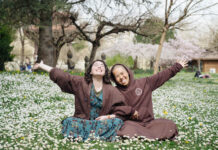
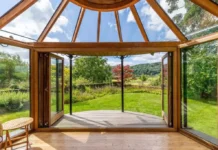
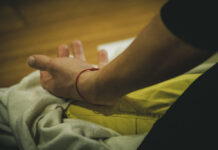

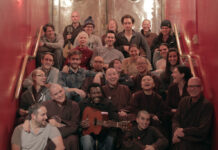
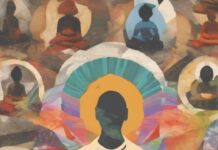
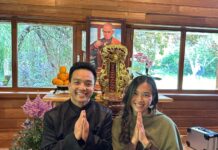
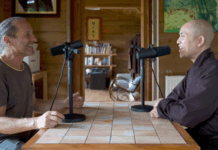
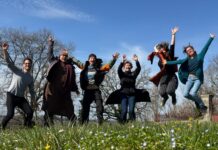
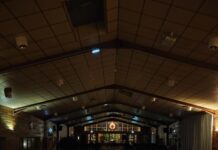
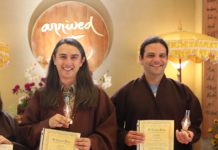
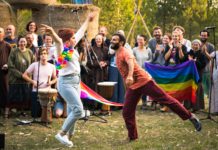
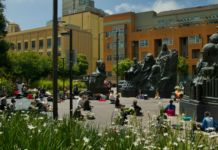

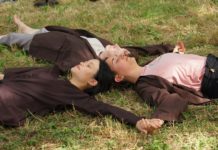


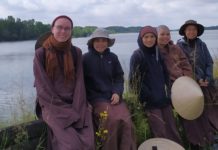
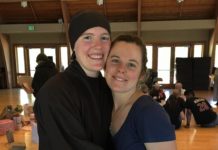
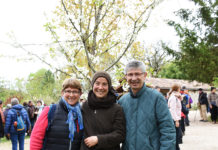
This is beautifully written. Thank you so much! I hope to join the program at some point in the next six months. Your description of a monastic life gives me hope that I, too, can overcome my doubts and reservations. Bless you.